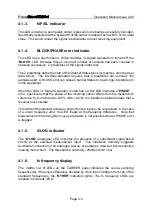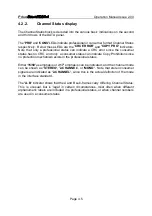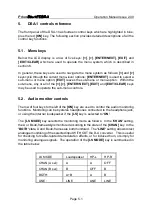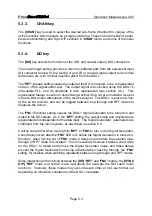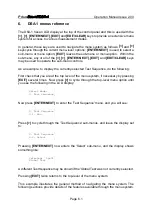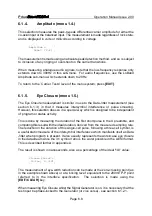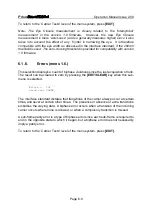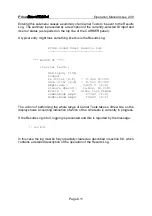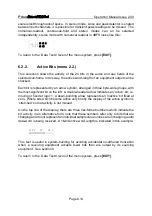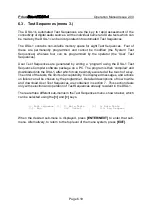
Prism
Operation Manual Issue 2.00
Page 6.5
6.1.2.
fs Jitter (menu 1.2.)
This selection measures interface timing jitter at the sampling-rate, which is principally
a parameter of the transmitting equipment. The results of the measurement are
displayed as follows:
fs Jitter [P-P]
= 8.7ns fc=1k5
The reading is taken by continuously measuring the timing offset of a particular
transition in the carrier from a reference instant derived by an ultra-stable PLL (phase-
locked-loop) within the DSA-1. Processing of the collected data yields a peak-to-peak
value for this timing uncertainty, or jitter. The transition chosen for this analysis is as
far away as possible from transitions which are subject to data-related variation and so
the reading is reasonably independent of program content and cable-related effects,
at least until the jitter becomes very marked. This process is inherently self-calibrating,
since all temporal measurements are interleaved with calibrations using known time
intervals from the internal TCXR. More detail of jitter-related measurement is provided
in section 8 and appendix A.
The measurement of jitter is subject to a low-frequency roll-off in the rejection response
of the PLL, which means that jitter below the PLL corner frequency is tracked by the
PLL, and so cannot be measured. The DSA-1 PLL's corner frequency is displayed in
the bottom right-hand corner of this sub-menu, and can be toggled between 700Hz or
1.5kHz using the [EDIT/CLEAR] key. The 1.5kHz setting is intended for general use
since it has lower intrinsic jitter and so can measure jitter at lower amplitudes; the
700Hz setting should be used specifically to detect low-frequency jitter.
The [ENTER/NEXT] key toggles the jitter-measurement units between 'ns'
(nanoseconds) and '%UI' (percent of one Unit Interval, see appendix A).
The [<] and [>] keys may be used to respectively decrease or increase the amplitude
of the GEN2 jitter modulator (see section 6.4.8), if it is operating. Thus jitter transfer
can be checked without having to continually navigate between menus. Each time the
modulator is adjusted, the LCD screen momentarily shows the modulator settings.
Occasional appearance of the '*RANGE' message indicates that the DSA-1 is
momentarily having difficulty in tracking the range of rapidly-changing jitter.
To return to the `Carrier Tests' level of the menu system, press [EXIT].



